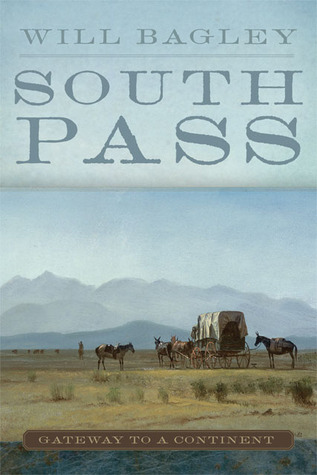 Will Bagley, South Pass: Gateway to a Continent (University of Oklahoma Press, 2015)
Will Bagley, South Pass: Gateway to a Continent (University of Oklahoma Press, 2015)
So far, this is the only book related to the Pony Express ride I regret buying. It’s not necessarily bad. It’s just that with libraries closed due to COVID-19, I couldn’t borrow it, and it seemed promising, so I bought a Kindle copy. I would much preferred to have borrowed it as I doubt I’ll use it much in the future.
The book is a compilation of events in and around South Pass, a twenty-mile wide gap in the Rocky Mountains with a slope gentle enough to allow wagon traffic. As such, the South Pass “gateway” facilitated passage to the west side of the Rockies, and set the route for successive waves of trappers, explorers, the mail, stagecoaches, settlers, the Pony Express, and the first transcontinental telegraph.
The book opens with an introductory section on the description and characteristics of South Pass. Though the Pass allowed all of this traffic, it is relatively high (about 7,500 feet), and the weather often harsh. Most of the balance of the book is given to relating stories about that harshness, which is to say, it’s a collection of the tragedies (wars, the Mormon handcart migration, freezing winters) that occurred in the area.
Most of these events are recounted elsewhere, and in my opinion, better. The bottom line is that I don’t think Bagley is a very good writer, especially compared to other’s I’ve read for this trip.
What the book seems to want to add to the canon is contemporaneous narratives. I found these uninteresting and unenlightening. The author might state, for instance, that the scenery is not not very remarkable, especially considering one is passing across the continental divide. This statement is then followed by quotes of various travelers of the mid-1800s saying the same thing, and not necessarily in more engaging language. After a while, I started skipping the quotes altogether.
Bagley also has an annoying habit of quoting other authors and feeling compelled to introduce the quotes with, “As so and so has written,” or similar language. It makes for tedious reading.
Finally, the book goes off on a couple of tangents that seem important to the author, if not necessarily to the book. One of these is a long section dedicated to efforts to excavate and document a long-forgotten fort near the pass. The project may be important, but the section read more like an appreciation for work a friend of his was doing, even if that wasn’t the case. It seemed, that is, personal to the author, and not in a way that conveyed any sense of that importance to me. Another is an apparent need to denigrate the Mormons leadership, especially Brigham Young. The criticism is couched as bringing to light shortcomings and policies that have not been fully developed. But it somehow comes across as vindictive.
There’s useful information here. Some of the book is worth reading. But overall, I wish I were able to borrow it and had spent the money on a book I would appreciate more.